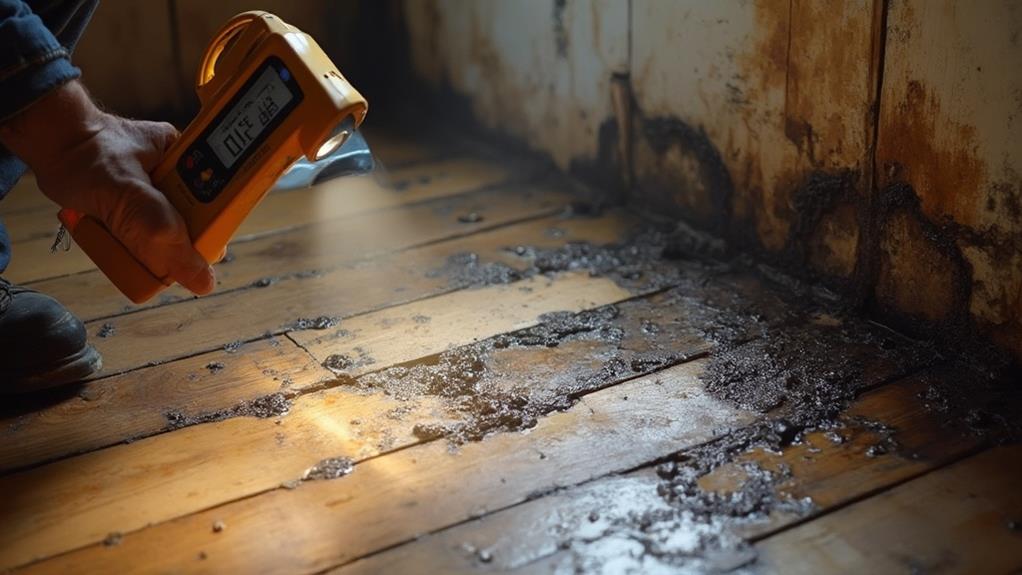When assessing water damage and mold growth, prioritize safety by checking structural integrity and wearing appropriate PPE. Identify water sources through visual inspection and moisture meters. Document damage with photos, videos, and detailed notes. Evaluate structural integrity by looking for sagging, warping, or gaps in building components. Spot mold growth by examining discolored patches and musty odors. Consider the extent of damage, water source, timing, and affected materials when determining if professional intervention is necessary. Proper assessment is crucial for effective restoration and preventing further harm to property and health. The following steps provide a comprehensive approach to this critical process.
Safety First
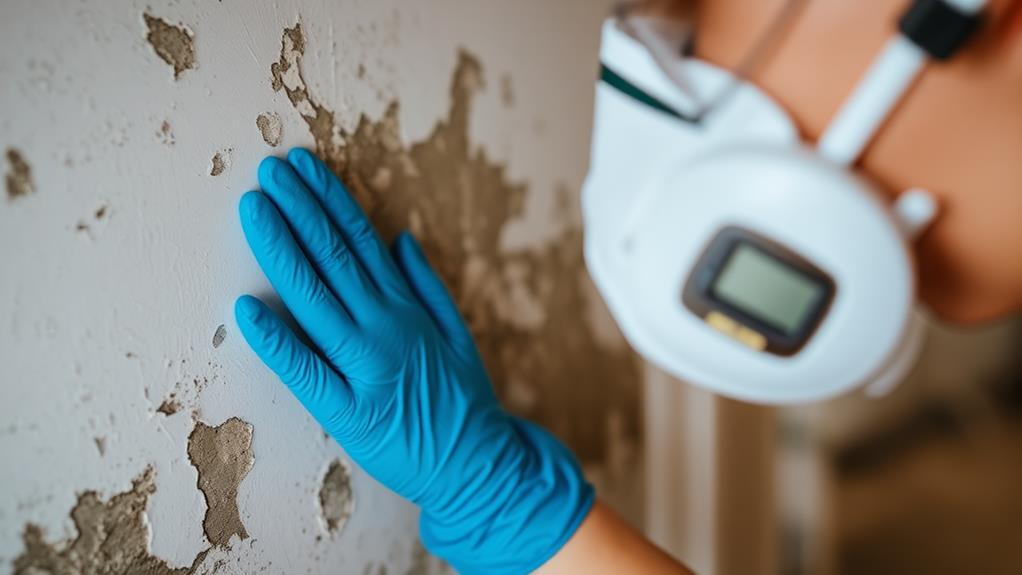
When addressing water damage and potential mold growth, safety must be the primary concern. Before entering a water-damaged area, assess the structural integrity of the building and be aware of potential electrical hazards. Turn off the main power supply if water has come into contact with electrical systems. Wear appropriate personal protective equipment (PPE), including waterproof boots, gloves, and a respirator mask rated for mold spores.
Be cautious of slip and fall hazards on wet surfaces and watch for falling debris, especially in areas with saturated ceilings. If standing water is present, consider the possibility of contamination from sewage or chemicals. In such cases, professional remediation may be necessary.
When dealing with mold, avoid disturbing visible growth to prevent the release of spores into the air. If you have respiratory issues or a compromised immune system, it's advisable to leave mold inspection and remediation to professionals. Always work with proper ventilation and, if possible, contain the affected area to prevent cross-contamination. Document the damage thoroughly for insurance purposes, but prioritize personal safety over property assessment.
Identifying Water Sources
To effectively address water damage and prevent mold growth, identifying the source of water intrusion is crucial. Begin by conducting a thorough inspection of the affected area, looking for visible signs of water entry. Common sources include roof leaks, plumbing issues, foundation cracks, and poorly sealed windows or doors.
Check for water stains on ceilings, walls, and floors, as these can indicate the path of water flow. Inspect pipes, faucets, and appliances for leaks or signs of corrosion. Pay attention to musty odors, which may suggest hidden moisture problems. Use moisture meters to detect elevated moisture levels in building materials, helping pinpoint areas of concern.
Consider external factors such as improper drainage, clogged gutters, or landscaping issues that may direct water towards the structure. In basements or crawl spaces, look for signs of water seepage through walls or floors. For upper floors, examine the roof and attic for potential entry points. Once the water source is identified, take immediate steps to stop the intrusion and begin the drying process to minimize damage and prevent mold growth.
Documenting Damage
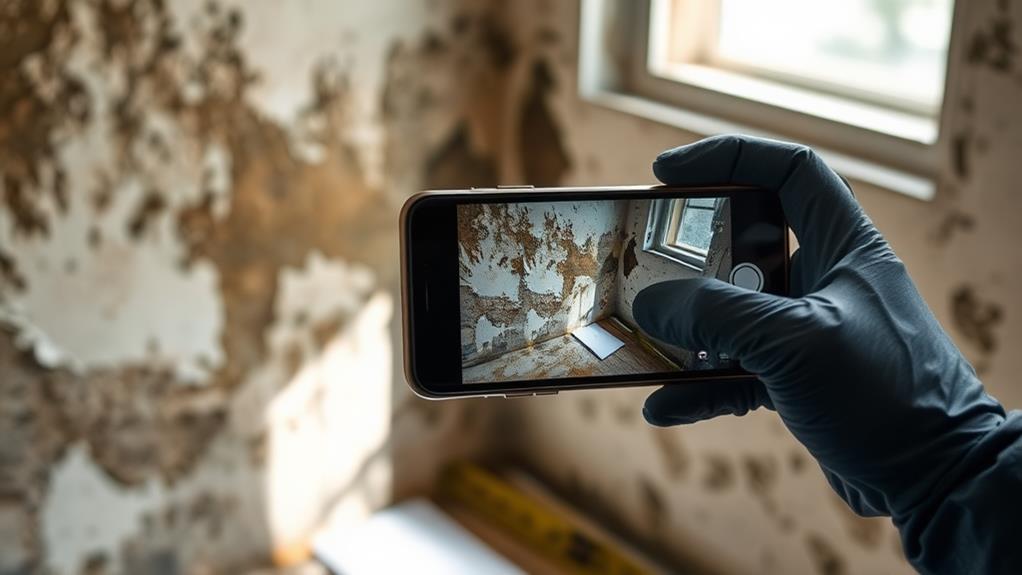
After identifying the source of water intrusion, thorough documentation of the damage is the next critical step in addressing water-related issues. This process involves creating a comprehensive record of the affected areas, extent of damage, and any visible signs of mold growth. Begin by taking detailed photographs and videos of all impacted surfaces, including walls, floors, ceilings, and personal belongings. These visual records serve as crucial evidence for insurance claims and help track the progression of damage over time.
Measure and record the dimensions of affected areas, noting specific details such as water levels, staining, and material deterioration. Use a moisture meter to assess the moisture content of various materials, particularly in less visible areas like wall cavities or under flooring. Document any unusual odors, as these can indicate hidden mold growth. Create a written inventory of damaged items, including their condition and estimated value. This detailed documentation not only aids in the restoration process but also provides valuable information for insurance adjusters and remediation professionals. Maintain a chronological log of all observations, actions taken, and communications related to the water damage incident to ensure a complete and accurate record.
Assessing Structural Integrity
Safety is paramount when assessing the structural integrity of a water-damaged building. Before entering, ensure the electricity is turned off and the structure is stable. Look for signs of compromised integrity, such as sagging ceilings, warped floors, or cracked walls. These indicators suggest potential structural weakening due to water absorption.
Examine load-bearing walls and support beams for signs of water damage or rot. Pay close attention to wooden structures, as they are particularly susceptible to water-induced deterioration. Check for soft or spongy areas in wooden elements, which may indicate decay.
Inspect metal components for rust or corrosion, especially in areas where water has pooled or moisture levels remain high. Assess the foundation for cracks, shifting, or settling that may have occurred due to water saturation of the surrounding soil. Look for gaps between walls and floors or ceilings, which could indicate structural movement.
If you notice any of these issues or are unsure about the building's stability, consult a structural engineer immediately. Professional assessment is crucial to determine the extent of damage and necessary repairs to ensure the building's safety and integrity.
Spotting Mold Growth
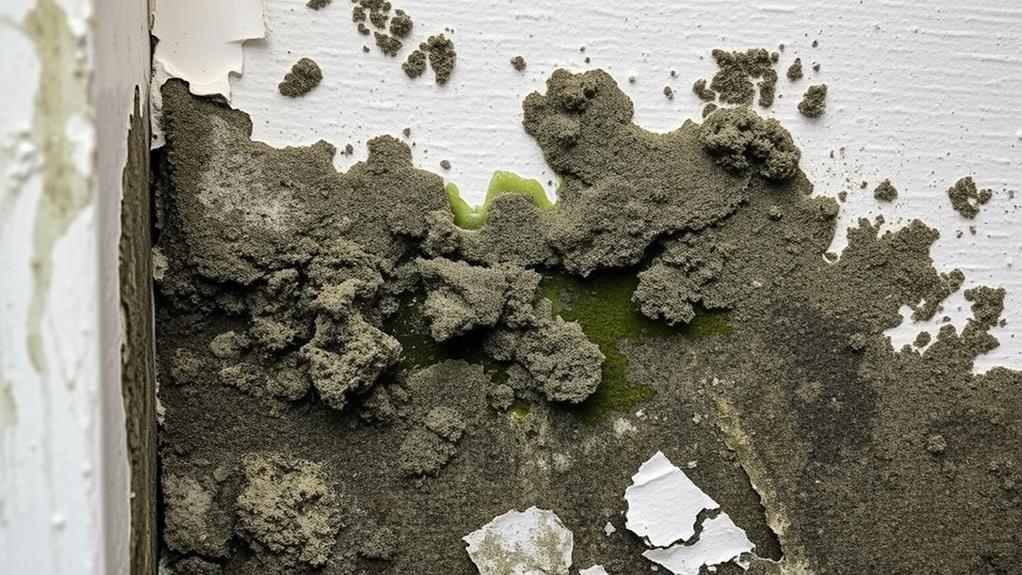
Identifying mold growth is a critical step in assessing water damage. Mold can begin to grow within 24-48 hours of water exposure, making it essential to inspect affected areas promptly. Look for visible signs of mold, which may appear as discolored patches on walls, ceilings, or floors. Common colors include black, green, brown, or white, often with a fuzzy or slimy texture.
Pay close attention to areas with high moisture retention, such as basements, crawl spaces, and bathrooms. Inspect hidden spaces behind wallpaper, under carpets, and inside wall cavities where moisture can accumulate. Use a flashlight to examine dark corners and crevices thoroughly. Be aware of musty odors, which can indicate hidden mold growth even if it's not visible.
In addition to visual inspection, consider using moisture meters to detect elevated moisture levels in building materials. These tools can help identify potential mold growth areas before visible signs appear. If you suspect extensive mold growth or have health concerns, it may be necessary to consult a professional mold inspector for a comprehensive assessment and testing.
Evaluating Affected Materials
Once mold growth has been identified, the next step is to evaluate the materials affected by water damage. This assessment is crucial for determining the extent of the damage and developing an appropriate remediation plan. Begin by categorizing materials into porous, semi-porous, and non-porous types.
Porous materials, such as drywall, carpeting, and upholstered furniture, often require replacement if extensively damaged or moldy. These items can harbor moisture and mold spores deep within their structure, making thorough cleaning difficult.
Semi-porous materials, including wood and concrete, may be salvageable depending on the severity of damage and the duration of exposure. Non-porous materials like metal, glass, and plastic are typically easier to clean and disinfect.
Assess the extent of visible mold growth on each material, noting any discoloration, warping, or structural changes. Use moisture meters to detect hidden moisture within walls, floors, and other surfaces. Document all findings, including photographs, to guide the remediation process and for insurance purposes. Consider consulting a professional mold inspector for a comprehensive evaluation, especially in cases of extensive damage or when dealing with high-risk areas such as HVAC systems or load-bearing structures.
Determining Professional Intervention
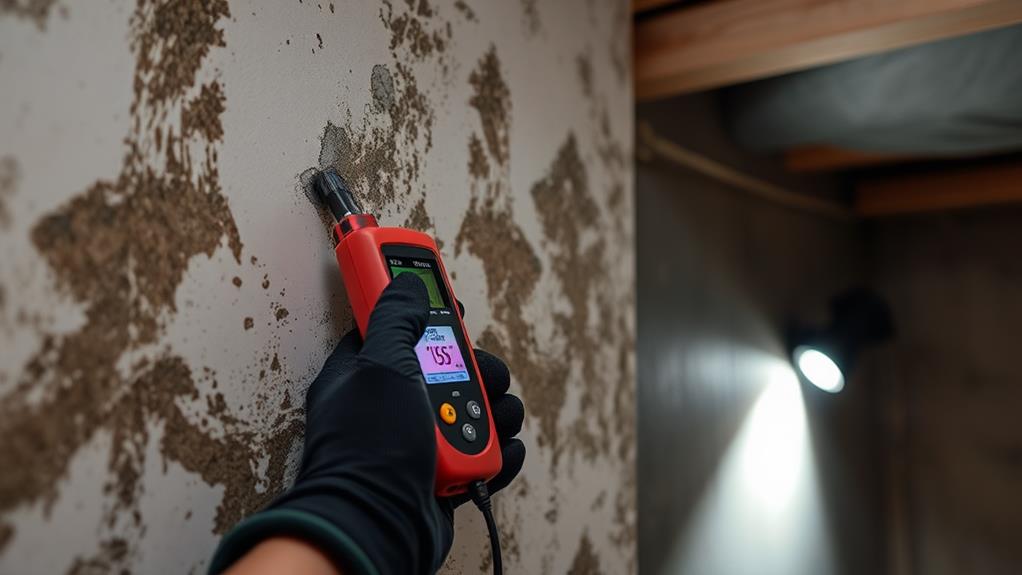
Given the complexity of water damage and mold remediation, determining when professional intervention is necessary becomes a critical decision-making process. Several factors should be considered when assessing the need for expert assistance.
The extent of water damage is a primary consideration. If the affected area exceeds 10 square feet or involves multiple rooms, professional help is advisable. The source of water is also crucial; contaminated water from sewage or floods requires specialized handling.
Time is another critical factor; water damage left untreated for more than 24-48 hours significantly increases the risk of mold growth and structural damage.
The presence of visible mold growth, especially if widespread or in hard-to-reach areas, necessitates professional remediation. Additionally, if occupants experience health symptoms potentially related to mold exposure, immediate expert intervention is warranted.
The complexity of affected materials, such as insulation, drywall, or HVAC systems, may also require specialized equipment and expertise.
Ultimately, if there is any doubt about the severity of the situation or one's ability to handle it safely and effectively, consulting with a certified water damage and mold remediation professional is the prudent course of action.
Frequently Asked Questions
How Long Does It Take for Mold to Start Growing After Water Damage?
Mold can begin growing within 24 to 48 hours after water damage occurs, given the right conditions. Factors such as humidity, temperature, and available nutrients influence the speed of mold growth in water-damaged areas.
Can I Use Bleach to Clean up Mold Caused by Water Damage?
Bleach can be used to clean surface mold on non-porous materials. However, it's not effective for porous surfaces or deep-rooted mold. Professional cleaning methods are recommended for extensive mold growth or water damage situations.
Will My Homeowner's Insurance Cover Water Damage and Mold Remediation Costs?
Like a ship's hull, insurance coverage can have hidden leaks. Homeowner's policies often cover sudden water damage, but mold remediation might be limited or excluded. Review your policy carefully and consult your agent for specific coverage details.
Are There Any Long-Term Health Effects From Living in a Water-Damaged Home?
Living in a water-damaged home can lead to long-term health effects, including respiratory issues, allergies, and immune system problems. Prolonged exposure to mold and bacteria may cause chronic conditions like asthma, hypersensitivity pneumonitis, and even cognitive impairments in some cases.
How Can I Prevent Water Damage From Happening in the Future?
To prevent future water damage, regularly maintain plumbing, gutters, and roof. Install water detection devices and proper drainage systems. Ensure proper home insulation and ventilation. Promptly address leaks and moisture issues. Consider waterproofing vulnerable areas of your home.
Conclusion
Assessing water damage and mold growth is a critical first step in restoration. Like peeling back layers of an onion, each aspect of the evaluation reveals deeper insights into the extent of the problem. Thorough documentation, safety precautions, and careful examination of structural elements are paramount. Identifying mold growth and compromised materials guides decision-making for professional intervention. Swift, accurate assessment paves the way for effective remediation, protecting both property and health.
